Outsider Bikes Missing Link Long-Travel Conversion for the Santa Cruz Hightower
(discontinued)
| Where To Buy | |||
|---|---|---|---|
Free shipping on orders over $50 (continental U.S. only).
International shipping available. Some exclusions apply. |
|||
Free shipping on orders over $50 (continental U.S. only).
International shipping available. Some exclusions apply. |
|||

Outsider Bikes has come up with a crafty new upper suspension link that allows the 135mm-travel Santa Cruz Hightower to be converted into a 150mm machine. The bike retains shreddable geometry and must run a newer Metric shock. Coupled with a 150 or 160mm fork, the new link and shock move the Hightower into a bigger bike category like the Hightower LT without having to upgrade an entire frame. We spent the past few months aboard the “Hacktower” to see what the Missing Link could unlock from our trusty daily driver.

Ever since the release of the original Hightower, people began modifying and tweaking setups with longer stroke shocks, offset bushing hardware and taking a bit of a gamble when it came to frame contact with rear tires, link clearances and geometry changes. The Santa Cruz EWS team was also seen modifying their races bikes with a new prototype link that allowed them to eek out more travel as well. The simple fact is that the Hightower was incredibly capable as a trail bike, but the extra travel allowed it to be pushed even harder in rougher terrain - hence the birth of the Hightower LT. The Missing Link comes in where these other solutions fell short (or were unobtainable to the public).
Highlights
- Upper link assembly features two travel modes (150mm and 145mm) using stock hardware and flip chips
- 204 grams with bearings (versus stock link with bearings at 182 grams)
- Designed to run a 210x55mm Metric shock with 8mm x 22mm bushings (shock and bushings not included)
- MSRP $168 USD
Initial Impressions
The Missing Link comes with new bearings installed and ready to mount. It sports a nicely machined but blockier shape compared to the stock link, with flat black anodizing to give it a nice finished surface. On the scale, the new Missing Link weighed in a little more at 204 grams versus the 182-gram stock link.


We were excited about the potential of the extra 15mm of rear travel, but the chance to capitalize on new technology with Metric shock options was pure icing on the cake. This is a perk of the Missing Link upgrade option, as Hightower owners are still stuck with imperial-sized shocks, even on the Hightower LT.
We sourced a RockShox Super Deluxe shock with a medium compression and medium rebound tune to handle things on the back end. We then up-forked to a 160mm DVO Diamond Boost to keep the front end up to snuff with the more capable rear end. For reference, the Diamond and Super Deluxe replaced the stock 140mm RockShox Pike RCT3 fork and RockShox Monarch RT3 shock.

Installation of the link was easy and painless. The new link re-uses the stock pivot axle, bearing covers and pivot hardware - including the shock bolts, flip chips and their torque specs. Speaking of the flip chips, the new link utilizes them in an orientation that does not alter bike geometry between the two positions, but rather the rear travel, creating only a slight leverage rate change we show in the graph below. The main purpose of the flip chip on the Missing Link is to allow more clearance at the seat tube for larger tires during bottom out by shortening the overall travel 5mm. To allow for the longer shock in the frame, the link has been designed to sit very close to the seat tube. Because of this tight space restriction, the link unfortunately could not capitalize on Rockshox's optional rotational bearings on the shaft end of the shock to butter-up breakaway friction even more.

On The Trail
After cruising around and feeling things out in the driveway, 200psi in the shock with two volume tokens provided 33% sag in the rear, right where we like to run the Hightower. The bike was plusher when bunnyhopping off curbs, bouncing around and compressing into the pavement thanks to its 15mm of extra travel. However, it still retained its liveliness in pedaling and felt good while turning and throwing a few cutties. It was time to bring the bike to the trails to really get a feel of the new link.

The stock Hightower has become a daily driver for most riding so it was very interesting to ride the new Hacktower in some very familiar terrain for comparison right off the bat. What exactly does 15mm of additional rear travel with a Super Deluxe feel like? Very familiar in mellow and smoother terrain, which is good, but once the rougher stuff shows up, the modifications become apparent. The bike stays much more composed on braking bumps and chop, and the chunky sections of trail became more manageable at faster speeds. Oh, that huck to flat? Yeah, go ahead and pop a little harder off of that now! The bike has grown some muscle while retaining that fun, responsive ride that the Hightower offers. Now the changes in 15mm of travel was not like jumping on a downhill bike, but the gains in control at high speed over rough terrain and in deep compression hits lifted the Hightower's ceiling beyond what was previously achieved by the stock configuration.

We attribute a decent part of the performance gain to the Super Deluxe shock as well. The link and shock work as a system, so the damper is every bit as important as any increase in travel. Small bump sensitivity heightened compared to the old Monarch, allowing for more traction over roots, small rocks and stutter bumps. The rear has a more consistent feel throughout long top-to-bottom runs thanks to the piggy back shock. Overall damping has made the rear end of this bike perform flawlessly.
After a few weeks on the trail, the third and final volume spacer was installed into the rear shock to give more deep compression ramp up off of bigger hits. We have not experienced any harsh bottom out clunks but the shock and link do effectively control deep hits to full travel well without revealing any noticeable bottom-out.

Like what a lot of people have found climbing with the Hightower LT compared to the original Hightower, the Hacktower hasn’t lost any of its climbing ability from original stock form. Even with the additional travel, it continues to keep an excellent pedaling platform that is found on Santa Cruz VPP bikes. We never felt the need to flip the Super Deluxe into firmer compression modes for the ascent. The extra travel comparison can be mirrored as well on the descents. The bike has not morphed into a DH plow sled, but the extra 15mm changes the bike's attitude into an Enduro race weapon, where you can use the extra margin of safety that more travel affords to let off the brakes and let it eat!
Kinematic Changes & More



Having spent limited time on a friend’s Hightower LT with different suspension bits, the kinematics and handling of the Hacktower were similar on the rear both up and down the trail. While it is hard to compare apples to apples with different shocks, the bikes felt very similar in ride quality and it is safe to say that the two are a close match.
By means of the flip chips, travel can be reduced to 145mm, giving room for larger diameter tires that can cause seat tube rub during bottom-out scenarios. Bontrager 2.3-inch SE5 tires were used during most of our testing and we never experienced issues with tire rub during bottom-out. In the name of testing, some time was spent in 145mm mode to feel the ride differences via the flip chip. With a slightly less falling rate leverage curve in the first half of the stroke, the rear suspension feels a touch more firm through the travel, but the differences are very small. Hard landings and full-travel scenarios felt a tad more harsh with the 5mm less of travel as well. We recommend running the link in full 150mm mode if tire clearance allows.

A 160mm fork is highly recommended on the front for a few reasons. The head tube angle will slacken to 66.8-degrees from 67-degrees stock (based on a 160mm travel 571mm axle-to-crown fork) while a 150mm fork, steepens things to 67.2-degrees (based on a 150mm travel 561mm axle to crown fork). With the new attitude this link gives the bike, steepening the head angle would be a drawback for more aggressive trails. In fact, a slacker head angle, even with the 160mm fork and the 66.8-degree head angle, is a something we would prefer.
The Hacktower has checked even more boxes for a do-it-all bike thanks to the increased travel and a new shock. The bike still sits perfectly as a daily-driver-trail-slasher machine and reverting back to the stock link would almost never seem necessary. The modified Hightower can be pedaled, shuttled, and adventured, doing it all very well. Can it eat as many bumps as a 170mm Nomad? Definitely not, but the Outsider link has taken the Hightower another step closer to that bridging the gap, making the bike more capable in rougher terrain at speed.

Things That Could Be Improved
As mentioned, a slacker head tube angle is desired. A half to a full degree slacker would help the Hacktower charge even harder in steeper terrain. Sure, running a 170mm fork is an option, but this means the seat tube angle gets slacker, the bottom bracket goes up and the reach shortens – all negatives in the quest for the perfect setup. With that said, the head angle is a bike frame design constraint more than the link design issue.
What’s The Bottom Line?
It is not often that you have a chance to tweak an already outstanding bike with no noticeable drawbacks and gain an even better ride quality from it. The Outsider Missing Link adds another option for Santa Cruz Hightower owners to unlock that party mode hidden in the bike. At a price of $168 for the link, the main cost objectives become sourcing the new rear shock and a longer travel fork.
Visit www.outsiderbikes.com for more details.
__________________________________
About The Reviewer
Nick Zuzelski - Age: 32 // Years Riding: 14 // Height: 6'3" (1.90m) // Weight: 185lbs (83.9kg)
Nick began riding motocross at a young age, a sport that would eventually lead him to the world of downhill. As a Colorado native, racing downhill, dual slalom, or a chill dirt jump session was never far away, and he eventually worked his way up the ranks to the Pro level. Now residing in Bend, Oregon, he's just a short trip away from those PNW goods. If a trail has fast flow, some fun gaps, and rocks to keep you on your toes, he is grinning ear to ear and getting after it. Living by the assumption that basically everything feels better with a short stem and wide bars, you can count on him keeping it real with a laid back attitude and flat pedals most of the time. Mechanical Engineer by trade, rider by heart, he enjoys riding it, finding out how it works, and making it better.
Photos by Devon Lyons
Specifications
The link comes with new Enduro bearings installed and is compatible with the linkage parts on the bike and follows all the Santa Cruz link service procedures. The large pivot axle torque setting is 60 in-lb.
As part of the upgrade, you will need a metric 210x55 shock with 8mm x 22mm bushings. We recommend air or coil shocks from RockShox, FOX, or Cane Creek. For something more customized, you may want to contact Ohlins or Push Industries.
The stock flip chip is used to achieve 150mm or 145mm of travel. With the Missing Link, the flip chip does not change geometry, but it does provide more bottom out clearance between the tire and seat tube. Most tires clear with 150mm of travel (upper chip position) but if you are running extra large tires you may need to run the link at 145mm (lower chip position).
Geometry relative to the Hightower "Low" setting is shown in the images. The position of the suspension (with sag) may vary depending on your suspension settings.
145mm or 150mm travel via flip chip
For more info, visit outsiderbikes.com.
| Where To Buy | |||
|---|---|---|---|
Free shipping on orders over $50 (continental U.S. only).
International shipping available. Some exclusions apply. |
|||
Free shipping on orders over $50 (continental U.S. only).
International shipping available. Some exclusions apply. |
|||












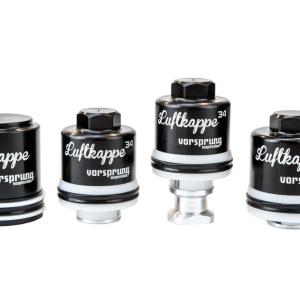


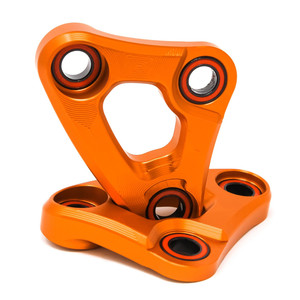
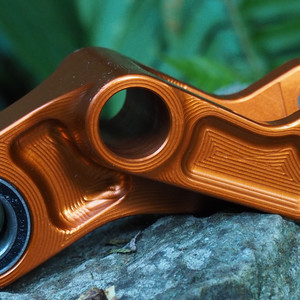

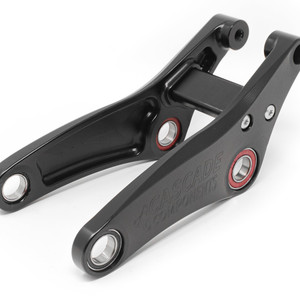
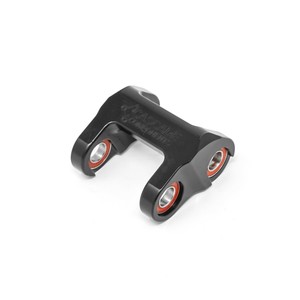










13 comments
Post a reply to: Tested: Outsider Missing Link Long-Travel Conversion for the San